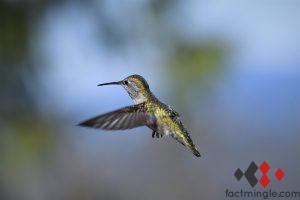Wildlife Photography: Preserving Nature’s Wonders
Introduction
Wildlife photography is a mesmerizing art form that captures the beauty and essence of animals in their natural habitat. From majestic lions to graceful dolphins, wildlife photography allows us to preserve and admire the wonders of nature. In this article, we will explore the significance of wildlife photography in preserving nature’s marvels, the challenges and rewards of this art form, and the impact it has on wildlife conservation.
The Significance of Wildlife Photography
Documenting Biodiversity
One of the most significant aspects of wildlife photography is its ability to document the rich biodiversity of our planet. From the depths of the ocean to the vast savannahs, wildlife photographers capture the diversity of species, habitats, and behaviors, providing valuable insight into the natural world.
Creating Awareness
Wildlife photography plays a crucial role in creating awareness about the importance of wildlife conservation. By showcasing the beauty and vulnerability of wildlife, photographers inspire people to appreciate and protect the natural world.
Preserving Memories
In addition to its role in conservation and awareness, wildlife photography also serves as a means of preserving memories. With the rapid decline of many species, these images become treasured records of animals and environments that may soon be lost.
The Challenges and Rewards of Wildlife Photography
Challenges
– Patience: Wildlife photography often requires long hours of waiting for the perfect shot.
– Environmental Conditions: Photographers must navigate diverse and sometimes harsh landscapes.
– Ethical Considerations: Ensuring minimal disruption to wildlife is a constant challenge.
Rewards
– Connection with Nature: Wildlife photographers experience a profound connection with the natural world.
– Unique Perspectives: Capturing animals in their natural habitat provides distinct and captivating images.
– Conservation Impact: Stunning wildlife photographs have the power to influence conservation efforts.
The Impact on Wildlife Conservation
Advocacy
Wildlife photographers often become advocates for conservation, using their images to support environmental initiatives and campaigns for wildlife protection.
Education
Through their work, photographers educate the public about the importance of preserving wildlife and their habitats, fostering a sense of responsibility and stewardship for the natural world.
Engagement
Stunning wildlife photographs engage and inspire people to connect with nature, fostering a sense of appreciation and concern for the well-being of wildlife.
Conclusion
In conclusion, wildlife photography is a crucial tool for preserving nature’s wonders. Through documenting biodiversity, creating awareness, and preserving memories, wildlife photographers play a vital role in conservation efforts. Despite the challenges, the rewards are immense, with the potential to impact how we perceive and protect wildlife for generations to come.
FAQs
1. What equipment is essential for wildlife photography?
To capture wildlife in its natural habitat, a high-quality telephoto lens, a sturdy tripod, and a reliable camera body are essential.
2. How do wildlife photographers ensure the safety and well-being of animals?
Ethical wildlife photographers prioritize minimal disruption to animals, using long lenses and observing from a safe distance to avoid causing distress.
3. What are some popular destinations for wildlife photography?
Popular wildlife photography destinations include the Serengeti in Tanzania, the Galápagos Islands, and the Amazon Rainforest, among others.
4. How can wildlife photography contribute to conservation efforts?
By showcasing the beauty and vulnerability of wildlife, photographers raise awareness and support for conservation initiatives, making a significant impact.
5. What are the key skills required for wildlife photography?
Patience, adaptability, and a deep understanding of animal behavior and natural environments are essential skills for successful wildlife photography.
6. How does wildlife photography differ from other forms of photography?
Wildlife photography often requires long hours in remote locations, capturing unscripted and spontaneous moments in the natural world.
7. Can wildlife photography lead to positive change in conservation policies?
Yes, striking wildlife images have the power to influence public opinion and inspire policymakers to enact and support wildlife conservation measures.
8. What ethical considerations should wildlife photographers bear in mind?
Respecting the natural behavior of wildlife, minimizing disturbance, and prioritizing the well-being of animals are crucial ethical considerations.
9. How can wildlife photographers inspire others to appreciate and protect nature?
Through their stunning images and stories, wildlife photographers evoke emotion, fostering a sense of wonder and reverence for the natural world.
10. Where can aspiring wildlife photographers find resources and mentorship?
Aspiring wildlife photographers can seek guidance from established professionals, join photography communities, and explore various workshops and educational resources.




